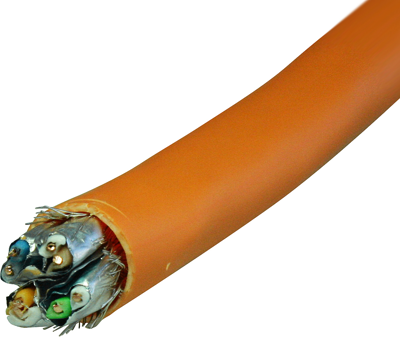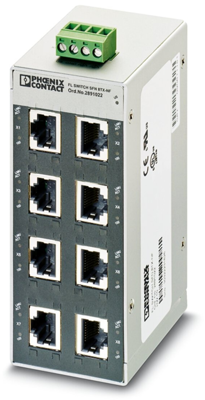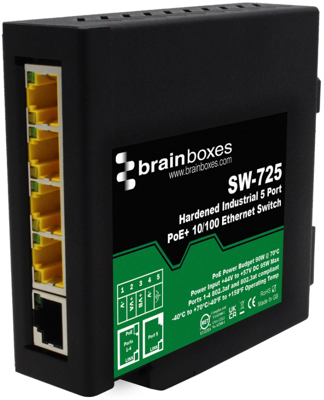
Ethernet: Definition & Guide
You could say that Ethernet forms the backbone of modern network infrastructures. The innovative technology has undergone continuous development since its introduction in the 1970s. This guide provides a comprehensive overview of how Ethernet works, how it differs from other network technologies and an insight into the key techniques and terms associated with it.
Definition: What is Ethernet?
Ethernet is a technology for wired data networks that connects devices such as computers, switches and routers within a local area network (LAN). The resulting systems can comprise a few to dozens of nodes.
This innovative technical solution enables the transmission of data between the connected devices. Ethernet technology thus forms the basis for most of today’s office and home networks, but is also used in industry. Networks are built using both physical cables and a range of network protocols and devices to ensure that data is transferred efficiently and securely.
The evolution of Ethernet technology
The history of Ethernet begins in the early 1970s, when a first form of this innovative technology was invented by Robert Metcalfe and his team at Xerox PARC. After several test phases, Metcalfe finally launched version Ethernet 1.0 in 1980, which was then further developed by the Institute of Electrical and Electronics Engineers (IEEE). The development of twisted pair cables and fiber optic cables in the 1990s made faster connections possible.
Originally conceived as a simple method of connecting multiple computers within a small area, Ethernet has become a global standard for network connections. From the initial 10 megabits per second (Mbps) to current standards that support speeds of up to 400 gigabits per second (Gbps): Ethernet technology has proven its ability to keep pace with the growing demands on network infrastructures.
What is an Ethernet cable?
An Ethernet cable, often referred to as a LAN cable, is a type of network cable that is specifically designed for use with Ethernet networks. It is used to physically connect devices such as computers, routers and switches within a local area network (LAN). These cables are crucial for the transmission of data over short to medium distances and play a central role in maintaining network communication. They are usually copper or fiber optic cable models.
There are different types of Ethernet cables that can be divided into categories (Cat) based on their performance and the maximum transmission speed and bandwidth supported.
The most common types are:
- Cat5e: Offers speeds of up to 1 gigabit per second (Gbps) and is commonly used in home and office networks. Advantages: also available in a shielded version, less internal interference thanks to double winding.
Important data: 100-250 Mhz / 1 Gbps / 100 m - Cat6: Supports speeds of up to 10 Gbps over short distances and has improved shielding.
Important data: 250-500 Mhz / 1 Gbps / 100 m (10 Gbps at 37-55 m) - Cat6a: This cable also enables 10 Gbps connections, but can also maintain the speed over a longer network cable length. This makes Cat6a ideal for demanding network infrastructures, such as those required in industry.
Important data: 250-500 Mhz / 10 Gbps / 100 m - Cat7: This is a stiffer cable that is particularly suitable for reducing signal attenuation.
Important data: 600 Mhz / 10 Gbps / 100 m (40 Gbps at 50 m / 100 Gbps at 15 m) - Cat8: This class of cable allows even higher speeds and bandwidths, but is less common in typical applications as such cables are designed for specialized use.
Important data: 25 Gbps for Cat 8.1 and 40 Gbps for Cat 8.2
Ethernet: How does it work?
Two types of hardware are crucial for the functionality of the Ethernet.
Data Communication Equipment (DCE): Routers, switches, hubs and all devices that can receive and forward data. They serve as connections and interfaces between the individual components of the data terminal equipment.
Data Terminal Equipment (DTE): Terminal devices. They receive data from the DCE via the Ethernet and can also send data to other terminal devices via the DCE.
Ethernet uses the “Carrier Sense Multiple Access with Collision Detection” (CSMA/CD) method to determine when a device can send data. This helps to avoid collisions when two devices want to send at the same time. Modern Ethernet systems also use switching techniques to route data packets directly to the target device, which increases the efficiency and speed of the network.
What is the difference between Ethernet and LAN?
While Ethernet is a technology that defines physical networks and partly the data link layer of a network, a LAN (Local Area Network) refers to the entire network itself. A LAN can utilize various technologies for connecting devices, including – but not limited to – Ethernet. In short, Ethernet is one method of implementing a LAN, but not the only means of doing so.
Ethernet technologies & terms – an overview
Over the years, specific Ethernet techniques and standards have been developed to meet different requirements. Some of the key terms and techniques associated with Ethernet are:
- Fast Ethernet: Provides speeds of up to 100 Mbps; was introduced to meet the demands of faster data transmission.
- Gigabit Ethernet: Increases speeds up to 1 Gbps; ideal for networks that require a high data transfer rate.
- Power over Ethernet (PoE): enables devices to be powered via the Ethernet cable, eliminating the need for separate power cables.
- Switches and routers: devices used to efficiently route and manage network traffic.
Ethernet – reliable network solutions
Ethernet remains a central technology in the world of networks. There have been rapid developments in both cable and interface technology in recent decades. The aim: to meet the needs of modern communication as well as the requirements of industry in the best possible way.
Bürklin Elektronik offers high-performance components in this context: from various interfaces and Ethernet switches to high-quality fiber optic cables. Find out more about our Ethernet solutions in our online store! Questions about the technology or products? Our experts will be happy to help you.











